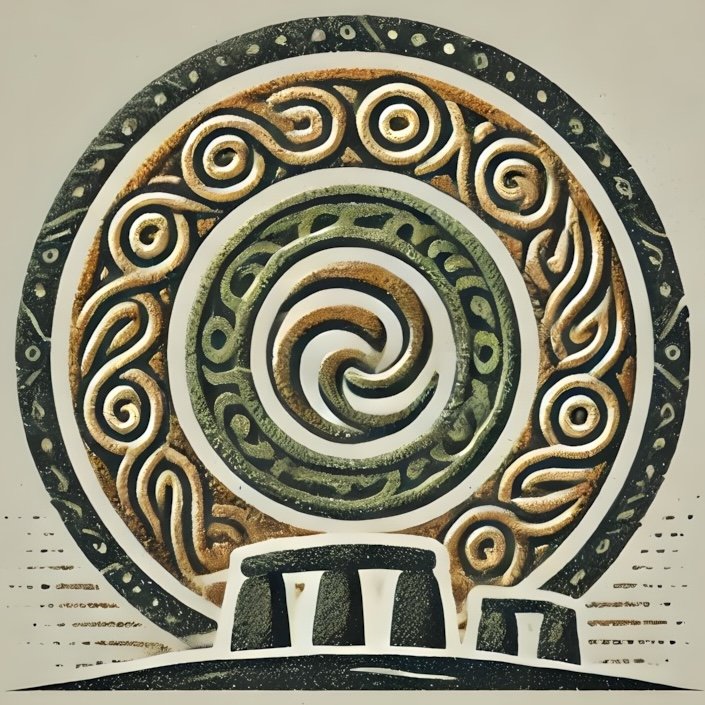The history of Ireland is rich and complex, woven with threads of myth, culture, and technological advancement. Among the most significant chapters in this narrative is the rise of metalworking, which marked a transformative period in Irish prehistory. This evolution not only revolutionized the tools and artifacts of the time but also fostered trade networks that connected Ireland with Britain and continental Europe. In this pillar page, we will explore the arrival of copper and bronze, the intricate trade networks established during this era, and the burial rites that reflect the social and spiritual beliefs of the time.
The Arrival of Copper and Bronze
The advent of metalworking in Ireland can be traced back to the late Neolithic period, around 2500 BCE, when copper was first introduced. This marked a significant shift from the previous reliance on stone tools and weapons. The knowledge of metalworking likely arrived through contact with neighboring cultures, particularly those in Britain and continental Europe. The earliest metal artifacts found in Ireland include small tools, ornaments, and weapons, showcasing the craftsmanship and innovation of the era.
Copper was initially used in its native form, but as techniques advanced, the process of smelting copper ore became more prevalent. By around 2000 BCE, the Bronze Age began, characterized by the alloying of copper with tin to create bronze—a stronger and more durable material. This development allowed for the production of a wider range of tools and weapons, including axes, swords, and decorative items. The rise of bronze not only improved the efficiency of farming and warfare but also reflected a burgeoning artistic culture, as artisans began to create intricate designs and forms.
As metalworking techniques evolved, so too did the social structures of Irish society. The ability to craft and wield metal tools became a marker of status and power. Chiefdoms emerged, with leaders who could control the production and distribution of metal goods. This shift laid the groundwork for more complex societal hierarchies and trade relationships, which would flourish in the centuries to come.
Trade Networks: Connections with Britain and Continental Europe
With the rise of metalworking came the establishment of extensive trade networks that connected Ireland with Britain and continental Europe. The demand for tin, essential for bronze production, led to increased interaction with regions rich in this resource, particularly Cornwall in Britain and parts of Spain. Archaeological evidence suggests that these trade routes were not only vital for the exchange of materials but also facilitated the flow of ideas, technologies, and cultural practices.
The movement of goods across the Irish Sea and beyond was likely conducted by skilled navigators who understood the tides and currents of the waters surrounding Ireland. This maritime trade was complemented by overland routes, which allowed for the exchange of goods and cultural influences with neighboring communities. As a result, Ireland became a vibrant hub of trade and interaction, where ideas and innovations from distant lands could take root and flourish.
One of the most fascinating aspects of these trade networks is the way they contributed to the development of a shared cultural identity. As metal artifacts from Britain and continental Europe began to appear in Ireland, they were often adapted and integrated into local traditions. This blending of influences can be seen in the design of metalwork, which combined elements from various cultures, creating a unique Irish aesthetic that would endure for centuries.
Burial Rites: Wedge Tombs, Cist Burials, and Goldwork
As metalworking and trade flourished, so too did the complexity of burial practices in Ireland. The way people honored their dead reflected not only their beliefs about the afterlife but also their social status and connections to the wider world. Among the most notable burial structures from this period are wedge tombs and cist burials, which provide valuable insights into the spiritual and social dynamics of ancient Irish society.
Wedge tombs, characterized by their distinctive shape and construction, are found primarily in the western part of Ireland. These structures often contained multiple chambers and were typically oriented to align with the setting sun during certain times of the year. The placement of these tombs suggests a deep connection to the landscape and celestial events, reflecting the spiritual beliefs of the people who built them. The presence of metal artifacts within these tombs, including bronze tools and jewelry, indicates that the deceased were likely individuals of high status, reinforcing the idea that burial practices were closely tied to social hierarchy.
Cist burials, on the other hand, are simpler in design, consisting of stone-lined graves that often contained a single body. These burials frequently included grave goods, such as pottery and metal items, which were intended to accompany the deceased into the afterlife. The presence of goldwork in these burials is particularly noteworthy. Gold items, including torcs and lunulae, were symbols of wealth and power, suggesting that the individuals buried with them held significant status within their communities.
The craftsmanship of goldwork during this period is a testament to the advanced skills of Irish artisans. The intricate designs and techniques used in creating these items demonstrate a high level of artistry and an understanding of metallurgy that was on par with contemporary cultures across Europe. The use of gold not only served as a marker of social status but also played a role in the spiritual beliefs of the time, representing a connection to the divine and the afterlife.
The Rise in Metalworking
The rise of metalworking and trade in Irish prehistory was a pivotal moment that shaped the course of the island’s history. The arrival of copper and bronze revolutionized the tools and artifacts of the time, while the establishment of trade networks connected Ireland with distant lands, fostering cultural exchange and innovation. Burial rites, exemplified by wedge tombs, cist burials, and exquisite goldwork, offer a glimpse into the spiritual and social dynamics of ancient Irish society.
As we explore the landscape of Ireland today, we can still see the echoes of this rich heritage in the ancient sites that dot the countryside. From the majestic wedge tombs of the west to the intricate gold artifacts housed in museums, the legacy of metalworking and trade continues to inspire and inform our understanding of Ireland’s prehistory. Whether you are a history enthusiast, a lover of mythology, or simply seeking to connect with the past, the story of Ireland’s rise in metalworking and trade is a captivating journey waiting to be explored.

